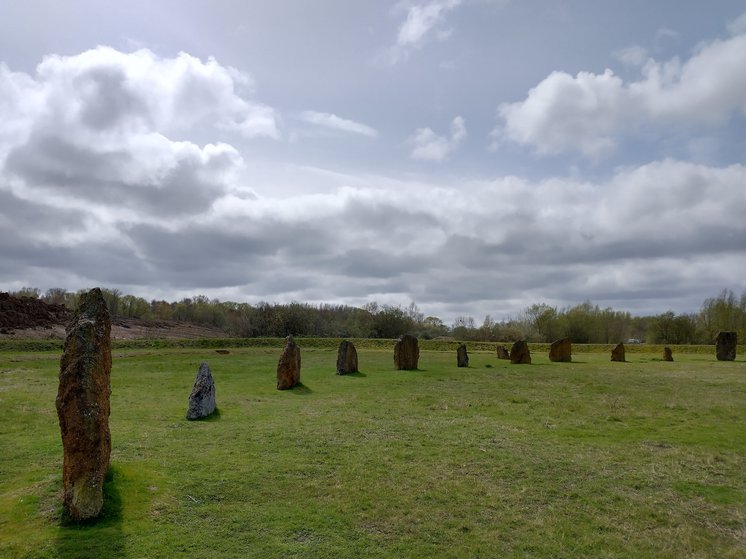The Blowing Stone of Kingston Lisle
26 April 2024
The mysterious Blowing Stone is a 3ft high sarsen stone that stands in the garden of 2 Blowing Stone Cottages, on Blowingstone Hill near the village of Kingston Lisle.
The stone is perforated with natural holes which produce an eerie booming sound if blown into in the correct way. It is said that the sound can be heard seven miles away!

The Blowing Stone of Kingston Lisle Credit: Rob Bradford, via Wikimedia Commons
There is a local legend that the sound of this stone was used by King Alfred the Great to alert his troops, camped a mile away atop White Horse Hill, to the arrival of the Danish forces before the Battle of Ashdown in AD 871.
The stone may have reached its current location by a rather circuitous route. It is thought that the stone was originally situated up on the Ridgeway, and that it was brought down to Kingston Lisle by the Atkins family who owned the estate between 1749 and 1901.
The earliest mention of the stone is cartographic, appearing on John Rocque's 1761 map of Berkshire. Felix Rolt points out that any reference to the stone's existence is conspicuously missing from earlier texts such as Elias Ashmole’s The Antiquities of Berkshire (1719), suggesting that the stone may have reached its current location at some point after that date.
The Blowing Stone inn
The row of cottages outside which the Blowing Stone stands was previously an inn, the Blowing Stone Inn (not to be confused with the modern day Blowing Stone Inn in the centre of the village). This rather remote inn used to at least provide welcome rest and refreshment for any tourists making their way too or from the Ridgeway, and no doubt having a curiosity such as the Blowing Stone helped make the inn worth a detour.
According to Curious Oxfordshire by Roger Long, the landlord of the pub used to plug the holes with wooden blocks to discourage drunken revellers from waking up the neighbourhood by blowing the stone at closing time!

An illustration of the Blowing Stone and revellers by Richard Doyle. From 'The Scouring of the White Horse' by Thomas Hughes (1859).
In reality, from the mid-19th century until as recently as the 1960s, the stone's blowing hole was protected by a padlocked lid (visible in the illustration above), and a small fee had to be paid at the inn (later the cottage) for the right at lifting the lid and attempting to elicit a sound from the stone.
There are a number of illustration of the Blowing Stone from the mid-19th century that make it clear that the stone once rested against the trunk of a large and rather fine elm tree that stood outside the inn.

